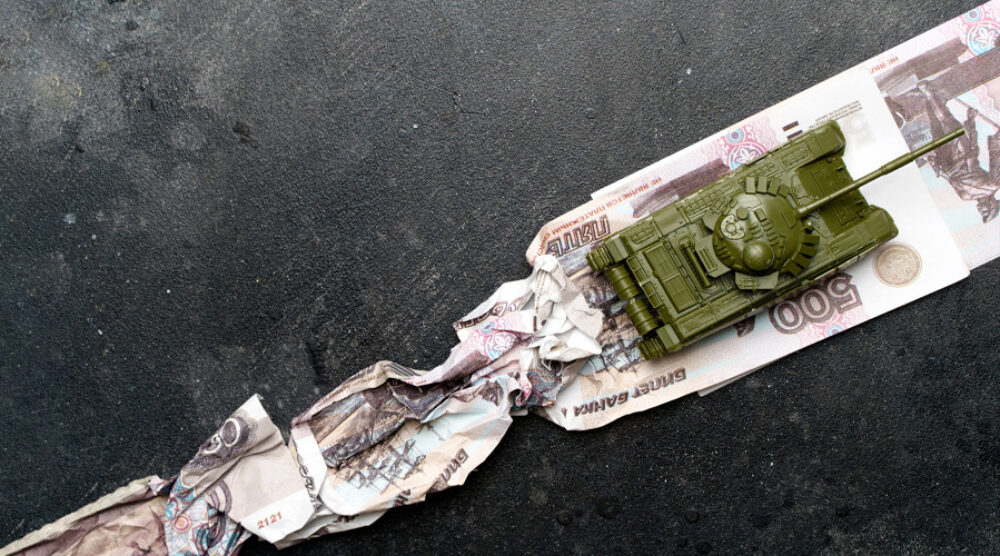The latest evaluations by IMF, World Bank and UN agencies reveal that the war in Ukraine that commenced with Russia’s invasion in late February 2022 poses a grave threat to global and regional growth, inflation and poverty. This is compounded by especially severe sanctions imposed on Russia by the US and its allies, although the rest of the world (representing the ‘Global South’) has not yet participated in these punitive sanctions (see Map 1).
Map 1

Predictably, but tragically, Ukraine is the worst hit country. The IMF projections suggest that real GDP is expected to decline by 35 percent in 2022, with no expectation of any rebound in the short-term (Figure 1). The World Bank suggests an even steeper decline in Ukrainian GDP of 45 percent in 2022.
Figure 1: Real GDP growth (%), Ukraine and Russia, actual and projected, 1992-2027

Russia too will suffer one of its steepest recessions (-8.5%) in 2022, but the projections are that there will be a return to rather modest growth by 2024 (see Figure 1). Once again, the World Bank predicts a worst-case scenario in which Russia will experience double digit recession in 2022, the first of its kind since the 1990s. Projections of a return to growth, however modest, suggest that the sanctions regime, which dealing a painful blow to the Russian economy, does not seem to have brought about a protracted collapse. One plausible reason is that the financial crisis that was supposed to ensue with an imminent collapse of the Russian ruble signalling large-scale default has not, so far, materialized (See Figure 2).
Figure 2: Official ruble exchange rate recovers after initial plunge

The humanitarian catastrophe experienced by ordinary Ukrainians is also reflected in the fact that , as of the first week of May, 2022, 5.76 million fled the country to seek refuge in neighbouring states. In addition, as of the first week of May, 7.7 million were forced to become internally displaced persons (IDPs) in Ukraine due to the Russian aggression. Thus, the total stock of external refugees and IDPs now stands at a staggering 31% of the population.
These massive and unprecedented disruptions will only reinforce the long-term demographic challenge facing Ukraine which, in common with many countries in the region, is facing a secular decline in its population due to a multiplicity of factors (high death rate, low fertility rate, out-migration). By 2050, Ukraine’s population is projected to be significantly smaller than it is today entailing a sharp shrinking of the workforce and a concomitant rise in the elderly population (see Figure 3). The long-term impact on growth and productivity are likely to be deleterious. As The Economist sums up in typically pithy fashion: ‘ For Ukraine … the war is a demographic disaster’.
Figure 3: Population projections for Ukraine

UNDP has warned that poverty will affect more than 30% of the population in Ukraine, while an additional 64% are likely to be at risk of poverty. The damage to infrastructure in Ukraine is massive and growing by the day. The World Bank estimates the bill at US 60 billion which will, of course, increase if the war persists.
Other emerging economies will suffer too, especially those in Europe. Collectively, the emerging economies in the region are expected to experience a -2.9 percent contraction in GDP which is significantly higher than the pandemic recession of 2020. As can be seen (Figure 4), all the major regions of the world are expected to experience a growth slow-down after a sharp rebound from the pandemic recession of 2020.
Figure 4: Real GDP growth, actual and projected, 1980-2027, major regions of the world

The expected recession in the emerging economies of Europe reflect the fact that they are strongly linked to Russia and Ukraine through trade, financial and migration flows. Both Russia and Ukraine are large suppliers of food grain to Europe and Central Asia and other parts of the world. Russia also represents a major source of remittance income for neighbouring countries.
Regions outside Europe are likely to be adversely affected primarily through the inflation channel. The surge in food, energy and fertilizers prices are already underway intensifying food insecurity in low- and middle-income economies.
The inflation aversion that has gripped monetary authorities across the world poses a major dilemma. Do central banks seek to tame inflation quickly by aggressively raising policy rates and tightening credit conditions? Are they prepared to court the risk of tipping fragile national economies into recession? History suggests that a ‘soft landing’ (inflation under control with minimal impact on employment and output) is easier said than done.
It is also noteworthy that Northwest Europe is heavily dependent on Russian energy and gas. 47 percent of natural gas and 25 percent oil in Europe are imported from Russia. Any large-scale attempt at rupturing these linkages is expected to lead to a sharp growth slowdown in Northwest Europe in 2022 and beyond.
The grave challenges facing the various regional economies can only be met through determined global cooperation and national commitments to end the war. This will, in turn, need to be complemented by rapid and massive mobilisation of humanitarian assistance and financial resources for the affected countries.
Yan Islam is an Adjunct Professor at the Griffith Asia Institute and former Branch Chief, ILO, Geneva. The views expressed here are strictly personal.








